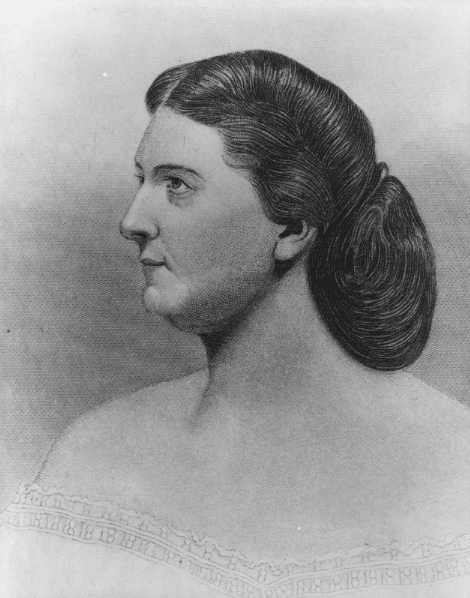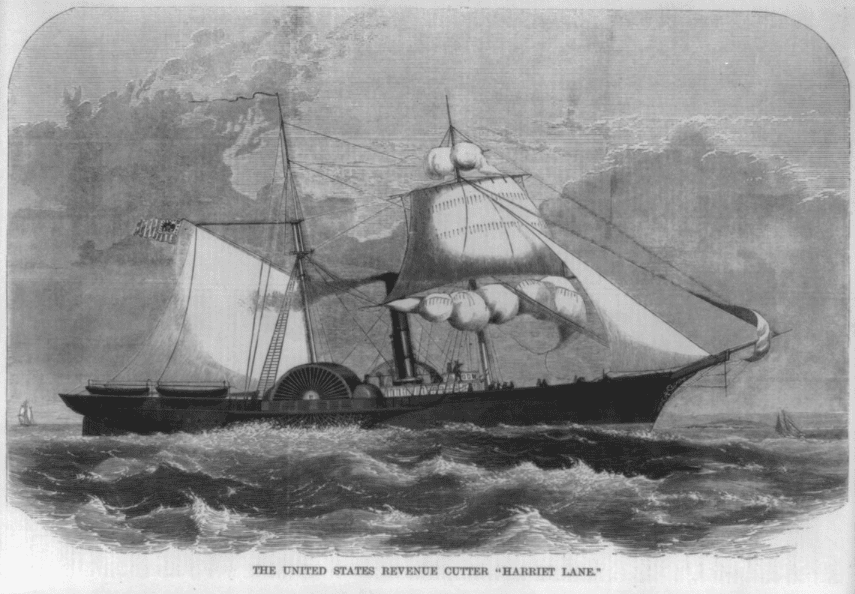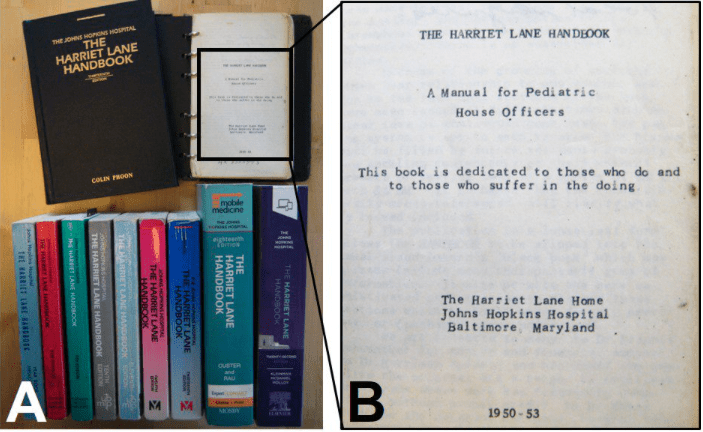Colin K. L. Phoon
New York, New York, United States

The name “Harriet Lane” is well-known to many pediatricians, but perhaps fewer recognize this woman’s other roles in US history (Hint: She was not a pediatrician!). In fact, the US presidency, the military, and pediatric medicine are all linked to the name “Harriet Lane.” Who was this remarkable woman who has been part of the fabric of US history for over 150 years?
Just the facts
Harriet Rebecca Lane (Figure 1) was born in Mercersburg, Pennsylvania, on May 9, 1830. Ms. Lane’s parents and several siblings died young. Her uncle (and future president of the United States) James Buchanan became her legal guardian in 1841. Under his tutelage and support, she became his political partner and confidante. Since Buchanan was a lifelong bachelor (and the only president who remained a bachelor during his entire term), she acted as his first lady from 1857-1861. In fact, the title of “First Lady” was first applied to Harriet Lane.1,2
After leaving the White House, she married Henry Elliott Johnston in 1866. The Johnstons had two sons, James Buchanan and Henry Elliot. Tragically, both sons died in adolescence from rheumatic heart disease, while her husband died unexpectedly a few years later in 1884 at age fifty-three. Harriet Lane Johnston thus lost her entire nuclear family within a span of four years. She died of cancer on July 3, 1903, in Narragansett, Rhode Island.1,2,3
Harriet Lane: the person
One captures only a glimpse of Ms. Lane’s remarkable qualities from the bare facts above. Described as “the first of the modern First Ladies,” Harriet Lane was “highly intelligent and lovely golden-haired, violet-eyed,” possessing both athletic skills and a keen mind.4 Her uncle nurtured her passion for politics and exposed her to Washington DC’s cultural and political circles. She accompanied Buchanan to England during his ambassadorship, winning the hearts of British society, including Queen Victoria. When Buchanan was elected president, Harriet Lane came to the White House with the goal of initiating in Washington the same cultural and social standards that existed in European capitals, facilitated by her knowledge of international affairs combined with her social assurance. But her most outstanding contribution was a real concern about social welfare, particularly with respect to Native Americans.2,3,4

Following the deaths of their sons, Harriet and Henry Johnston channeled their great sorrow by deciding they must assist in the medical search for knowledge of children’s diseases. In December 1883, they incorporated the Harriet Lane Home. The organization of the Johns Hopkins School of Medicine in 1893 allowed her the means to bring the Harriet Lane Home to fruition.5 Moreover, she left a large sum to establish a school for boys—“in loving memory of our sons”—which would become St. Alban’s School in Washington, DC.6
As an avid art collector, Harriet Johnston worked to establish a national art center, to make it possible for other Americans to know some of the same fullness of life she had experienced. Upon her death, she left her art collection to the Corcoran Gallery, there being no national gallery at the time. Her bequest forced the issue, and in 1906 the Supreme Court declared the Smithsonian Institution as the National Gallery. Thus, Harriet Lane Johnston activated the movement for federal sponsorship of the arts.4,7
Harriet Lane: the ship
In 1858, the US Revenue Cutter Service (precursor to the US Coast Guard) commissioned the first vessel named for a woman: the USS Harriet Lane (Figure 2). Built in New York City, she was a 750-ton, side-wheel steamer gunboat. She fired the first shot of the Civil War in March of 1861 at Fort Sumpter. Her successor (WSC-141) served from 1926–1946, including during World War Two. The current USCGC Harriet Lane (WMEC 903) is a multi-mission 270-foot medium-endurance cutter commissioned in May 1984. Notable missions have included serving as on-scene command for the initial search and recovery of TWA Flight 800 off Long Island, New York; responding to Hurricane Katrina in 2005; and assisting at the Deepwater Horizon oil spill in 2010.1,2,8
Harriet Lane: pediatric medicine

Harriet Lane in pediatric medicine. A: From the author’s collection of Harriet Lane Handbooks, whose sizes parallel the expansion of medical knowledge, from the first edition (upper right), to the sixth edition (lower left), to the twenty-second edition (lower right).B: Enlargement of the front page of the first edition of The Harriet Lane Handbook, which was 200 pages in length.
Most famously, the name “Harriet Lane” is attached to pediatric medicine. The first children’s hospital in the United States to be directly affiliated with a medical school, the Harriet Lane Home opened its doors in 1912 on the campus of The Johns Hopkins Hospital in Baltimore, Maryland. The chair of pediatrics was John Howland, one of the leaders in establishing the scientific basis of pediatrics.9,10 The Harriet Lane Home and its staff would go on to achieve renown as a center for pediatric medicine, including such luminaries—founders of their respective fields all!—as Helen Taussig (pediatric cardiology), Leo Kanner (child psychiatry), and Lawson Wilkins (pediatric endocrinology). Robert Cooke, chair at the Harriet Lane Home in the mid-twentieth century, was instrumental in the founding of the National Institute for Child Health and Development of the National Institutes of Health.10 The Harriet Lane Home officially closed in 1975 when the new Children’s Medical and Surgical Center opened.9,10 The Harriet Lane Clinic serves the local children of East Baltimore. During off-hours and similar to an urgent care center, the clinic also treats less acutely ill children and complements the work of the pediatric emergency department. To this day, the pediatrics housestaff continues to be nicknamed “The Harriet Laners” or “Laners” for short.10
Most pediatricians in recent decades know Harriet Lane mainly through the eponymous medical manual (Figure 3), the pediatrics equivalent of The Washington Manual of Medical Therapeutics for internal medicine. In the early 1950s, the first edition of the Harriet Lane Handbook was published internally (Figure 3A). The first editor was Dr. Henry Seidel10 and this manual has been described as the first point-of-care tool for the care of children.11 Inscribed in the Handbook: “This book is dedicated to those who do and to those who suffer in the doing” (Figure 3B). The Harriet Lane has assisted housestaff during countless hours at the bedside taking care of young patients. What started as a pocket-sized mini-binder of reference tables, how-to’s, and a brief drug formulary has grown in its twenty-second edition to more than 1,100 pages with global reach, but is still designed to be used at the patient’s bedside.
Conclusions
Beauty, brains, benefaction, brawn, and bedside care all aptly describe Harriet Lane: from a woman with remarkable spirit and intelligence, to distinguished US Coast Guard cutters, and to renowned pediatric clinical care, research, and teaching.
References
- Phelps SJ. Harriet Rebecca Lane Johnston. J Pediatr Pharmacol Ther. 2003; 8:83-85.
- Thiesen, WH. First Lady Harriet Rebecca Lane, and the cutters that have borne her name. Sea History. 2018; 163:16-20.
- First Lady Biography: Harriet Lane. National First Ladies’ Library. Accessed September 5, 2021. http://www.firstladies.org/biographies/firstladies.aspx?biography=16.
- Taylor, LC. Harriet Lane: Mirror of an age. Penn Hist. 1963; 30:213-225.
- Rosenberger HT. Harriet Lane Johnston: Pioneer advocate of special care for children with chronic disease. J Lancaster County Hist Soc 1972; 76:1-28.
- Clagett BA. Our Founder: Harriet Lane Johnston. St. Alban’s School History. Accessed September 5, 2021. https://www.stalbansschool.org/about/history/our-founder-harriet-lane-johnston/.
- Rosenberger HT. Harriet Lane Johnston and the formation of a national gallery of art. Records of the Columbia Historical Society, Washington, DC. 1969/1970; 69/70:399-442.
- History of CGC HARRIET LANE. United States Coast Guard Atlantic Area, Dept. of Homeland Security. Accessed September 5, 2021. https://www.atlanticarea.uscg.mil/Area-Cutters/CGCHARRIETLANE/History/.
- Harvey AM. The first full-time academic department of pediatrics: The story of the Harriet Lane Home. Johns Hopkins Med J. 1975; 137:27-47.
- Park EA, Littlefield JW, Seidel HM, Wissow LS. The Harriet Lane Home: A Model and a Gem. Dept. of Pediatrics, School of Medicine, The Johns Hopkins University: Baltimore, MD, 2006.
- Elsevier Announces Winners of Harriet Lane Essay Contest, October 27, 2015. Accessed September 5, 2021. https://www.elsevier.com/about/press-releases/clinical-solutions/elsevier-announced-winners-of-harriet-lane-essay-contest/.
COLIN K. L. PHOON, MPhil, MD, is Associate Professor of Pediatrics at New York University Grossman School of Medicine. Dr. Phoon has published over 100 papers and book chapters in clinical pediatric cardiology, diverse research areas (clinical, basic science, history), and medical education. Dr. Phoon was a “Harriet Laner” at Johns Hopkins from 1990-1993, and contributed the Cardiology chapter to the 13th edition of The Harriet Lane Handbook.
Highlighted in Frontispiece Volume 14, Issue 2 – Spring 2022

Leave a Reply